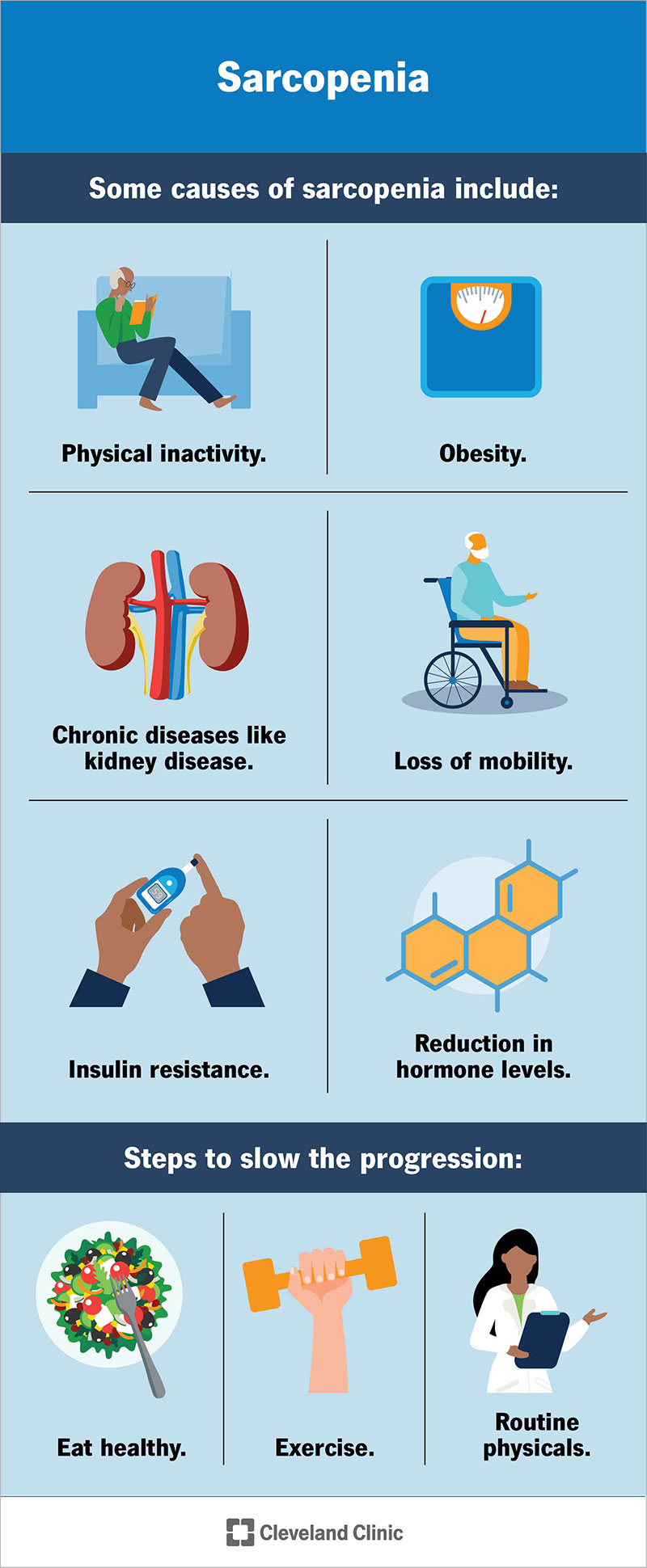Are you concerned about the loss of muscle mass as you age? Well, fret not, because we have some fascinating information for you. In this article, we explore the intriguing topic of reversing sarcopenia, the decline of muscle mass that occurs in older adults. We will provide you with valuable insights and helpful resources on how to combat this condition and build muscle effectively. So, if you’re ready to take control of your muscle health, let’s dive right in!

This image is property of d28hgpri8am2if.cloudfront.net.
Understanding Sarcopenia
What is Sarcopenia?
Sarcopenia is a condition characterized by the gradual loss of muscle mass, strength, and function that occurs with aging. It affects older adults, and it can have a significant impact on their overall health and quality of life. Sarcopenia is not a normal part of aging, but rather a result of various factors that contribute to the breakdown of muscle tissue.
Causes of Sarcopenia
Several factors contribute to the development of sarcopenia. The primary cause is the natural aging process, as the body undergoes various changes that affect muscle mass and function. Hormonal changes, such as a decrease in testosterone and growth hormone levels, play a role in the development of sarcopenia. Additionally, a sedentary lifestyle, inadequate protein intake, and chronic inflammation can also contribute to the condition.
Symptoms of Sarcopenia
Some common symptoms of sarcopenia include decreased muscle strength and endurance, reduced physical performance, and difficulty with activities of daily living. These symptoms can lead to an increased risk of falls and fractures, as well as a decline in overall mobility and independence. If you notice any of these symptoms, it is essential to seek medical attention for an accurate diagnosis and appropriate treatment.
Diagnosing Sarcopenia
Physical Examination
A physical examination is an essential component of diagnosing sarcopenia. During the examination, your healthcare professional will assess your muscle strength, coordination, and balance. They may also evaluate your overall physical performance and look for signs of muscle wasting.
Muscle Mass Measurement
Measuring muscle mass is another method used to diagnose sarcopenia. This can be done using various techniques, such as dual-energy x-ray absorptiometry (DXA) or bioelectrical impedance analysis (BIA). These methods provide valuable information about your muscle mass and can help determine if sarcopenia is present.
Muscle Strength Assessment
Assessing muscle strength is crucial in diagnosing sarcopenia. Your healthcare professional may use grip strength tests or other functional tests to evaluate your muscle strength. These tests measure the force applied by your muscles and can provide valuable information about the severity of sarcopenia.
Effect of Aging on Muscle
Muscle Mass Decline
As you age, you naturally experience a decline in muscle mass. This decline, known as age-related muscle loss or sarcopenia, can begin as early as your thirties and progresses more rapidly after the age of 60. Without intervention, this loss of muscle mass can lead to decreased strength and mobility, making daily activities more challenging.
Muscle Strength Decrease
In addition to muscle mass decline, aging also leads to a decrease in muscle strength. Your muscles become less efficient at generating force, making it harder to perform tasks that were once effortless. This decrease in muscle strength contributes to the functional decline associated with sarcopenia.
Loss of Muscle Quality
Aging also affects the quality of your muscles. As you get older, the composition of muscle tissue changes, and the proportion of fat and fibrous tissue increases. This alteration in muscle quality further contributes to the decline in muscle function and increases the risk of developing sarcopenia.
Preventing Sarcopenia
Engaging in Regular Exercise
Regular exercise is essential for preventing and managing sarcopenia. It helps maintain muscle mass, strength, and function. Aim for a combination of aerobic exercise, such as walking or swimming, and resistance training to maximize the benefits for your muscles. Consult with a healthcare professional or a qualified fitness instructor to develop an exercise program tailored to your needs and abilities.
Resistance Training
Resistance training, also known as strength training or weightlifting, is a crucial component of preventing sarcopenia. It involves using external resistance, such as dumbbells or resistance bands, to challenge and strengthen your muscles. Resistance training helps build muscle mass, increase muscle strength, and improve overall muscle function.
Maintaining a Balanced Diet
Eating a balanced diet is vital for preventing sarcopenia. Adequate protein intake is especially important, as protein provides the building blocks for muscle growth and repair. Include sources of lean protein, such as poultry, fish, eggs, and legumes, in your meals. Additionally, ensure you consume enough calories to support your activity level and provide the energy your muscles need.
This image is property of my.clevelandclinic.org.
Treating Sarcopenia
Exercise Programs
Exercise programs are an essential component of treating sarcopenia. Similar to preventing sarcopenia, a combination of resistance training and aerobic exercise is recommended. These programs aim to increase muscle mass, improve muscle strength, and enhance overall muscle function. Working closely with a healthcare professional or a qualified fitness instructor can help ensure safe and effective exercise programming.
Nutritional Strategies
Nutritional strategies play a crucial role in the treatment of sarcopenia. Increasing protein intake is particularly important for muscle growth and maintenance. Incorporate protein-rich foods into your diet, such as lean meats, dairy products, nuts, and seeds. Additionally, consuming adequate calories and following a well-balanced diet supports overall muscle health.
Supplement Options
Supplements can be a helpful addition to the treatment of sarcopenia. However, it is essential to consult with a healthcare professional before starting any supplements. Some commonly recommended supplements for sarcopenia include creatine, whey protein, and omega-3 fatty acids. These supplements may support muscle growth, improve muscle strength, and enhance overall muscle function.
Exercise Programs for Sarcopenia
Resistance Training
Resistance training is a key component of exercise programs for sarcopenia. It involves performing various exercises that target different muscle groups and challenge your muscles. Focus on exercises that use external resistance, such as dumbbells, resistance bands, or weight machines. Aim for two to three resistance training sessions per week, allowing for adequate rest between sessions.
Aerobic Exercise
In addition to resistance training, aerobic exercise should be included in exercise programs for sarcopenia. Aerobic exercise, such as walking, cycling, or swimming, helps improve cardiovascular health and endurance. Engage in aerobic exercise for at least 150 minutes per week, spread across several sessions, to reap the benefits for your muscles and overall health.
Combination Programs
Combination programs that incorporate both resistance training and aerobic exercise are highly effective in treating sarcopenia. These programs provide a well-rounded approach to muscle health, targeting both muscle mass and cardiovascular fitness. Working with a healthcare professional or a qualified fitness instructor can help tailor a combination program to meet your specific needs and goals.

This image is property of i.ytimg.com.
Nutritional Strategies to Combat Sarcopenia
Protein Intake
Increasing protein intake is crucial in combating sarcopenia. Aim for a target of 1.2 to 2.0 grams of protein per kilogram of body weight per day. Spread your protein intake evenly throughout the day and include a variety of protein sources, such as lean meats, fish, poultry, dairy products, eggs, and plant-based options like legumes and tofu.
Adequate Caloric Consumption
Consuming enough calories is essential for combating sarcopenia. Gradual weight loss or malnutrition can worsen muscle loss. Ensure you are consuming enough calories to meet your body’s needs, taking into account your activity level and overall health. Working with a registered dietitian can help you develop a personalized meal plan that meets your nutritional requirements.
Micronutrient Focus
Micronutrients, such as vitamins and minerals, play a crucial role in muscle health. Ensure you are getting an adequate intake of nutrients like vitamin D, calcium, and magnesium, which support bone and muscle health. Eating a balanced diet that includes a variety of fruits, vegetables, whole grains, and lean proteins can help ensure you are getting a sufficient range of micronutrients to support your muscles.
Exploring Supplement Options
Creatine
Creatine is a popular supplement that may benefit individuals with sarcopenia. It can enhance muscle strength and power, improve exercise performance, and support muscle growth. However, it is important to consult with a healthcare professional before starting creatine supplementation, as it may not be suitable for everyone.
Whey Protein
Whey protein is a high-quality protein source that can be beneficial for individuals with sarcopenia. It provides all essential amino acids, which are necessary for muscle growth and repair. Whey protein can be consumed as a shake or added to meals or snacks to increase protein intake. Consult with a healthcare professional or a registered dietitian to determine the appropriate amount of whey protein for your needs.
Omega-3 Fatty Acids
Omega-3 fatty acids, found in fatty fish like salmon and mackerel, as well as walnuts and flaxseeds, have been shown to have anti-inflammatory properties and may support muscle health. Including omega-3-rich foods in your diet or considering omega-3 supplements, under the guidance of a healthcare professional, may be beneficial for individuals with sarcopenia.

This image is property of ninkatec.b-cdn.net.
Benefits of Reversing Sarcopenia
Improved Strength and Mobility
By reversing sarcopenia, you can experience improved muscle strength and mobility. This can make daily activities easier and enhance your overall physical performance. Increased strength and mobility also contribute to a greater sense of independence and overall well-being.
Enhanced Quality of Life
Reversing sarcopenia can have a significant impact on your quality of life. With improved muscle function, you can engage in activities you enjoy and participate in social events with confidence. Additionally, maintaining muscle mass and strength can help prevent the development of other age-related conditions and enhance longevity.
Reduced Risk of Falls and Fractures
Sarcopenia is a significant risk factor for falls and fractures in older adults. By reversing sarcopenia and improving muscle strength, you can reduce the risk of falls and fractures. Stronger muscles provide better balance and stability, decreasing the likelihood of accidents.
Conclusion
Importance of Early Detection
Early detection of sarcopenia is crucial for effective treatment and prevention of further muscle loss. If you experience any symptoms of sarcopenia or notice a decline in muscle mass and strength, consult with a healthcare professional for a thorough evaluation. Early intervention can help slow down or reverse the progression of sarcopenia.
Lifestyle Changes for Reversing Sarcopenia
Reversing sarcopenia requires a comprehensive approach that includes regular exercise, proper nutrition, and, in some cases, supplement options. Engaging in resistance training and aerobic exercise, maintaining a balanced diet with an emphasis on protein intake, and considering supplements under medical guidance can all contribute to combating sarcopenia.
Consulting a Healthcare Professional
It is essential to consult with a healthcare professional, such as a physician, registered dietitian, or qualified fitness instructor, before making any significant changes to your exercise or dietary routine. This ensures that your approach to reversing sarcopenia is personalized, safe, and effective. They can provide guidance, support, and monitoring throughout your journey towards improving muscle health and overall well-being.







